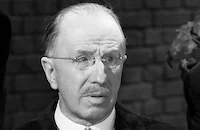The Life of the Party

Brief Synopsis
Cast & Crew
Roy Del Ruth
Winnie Lightner
Irene Delroy
Jack Whiting
Charles Butterworth
Charles Judels
Film Details
Technical Specs

Synopsis
Flo and Dot, song pluggers and clerks in a New York music shop, are exact opposites: the latter, beautiful and reserved, and the former, a typical gold digger. Foster, their employer, blames them for poor business and Le Maire, an excitable Frenchman courting their favor, wrecks the shop when asked to leave. Consequently, the girls are fired and take work in Le Maire's modiste shop. After being offered finery for a party, the girls take the clothes and depart for Havana--Dot having been sold on professional gold digging. There, Flo learns that Smith, a soft drink millionaire, is staying in their hotel but mistakes a Colonel Joy as their game; but as the wedding is set for Dot, she learns that Jerry Smith, with whom she is in love, is the actual millionaire. Le Maire arrives and exposes their plotting, but Jerry pays for their trouble and wins Dot as his wife.

Director

Roy Del Ruth
Cast

Winnie Lightner
Irene Delroy
Jack Whiting

Charles Butterworth

Charles Judels
Arthur Edmund Carewe
John Davidson

Arthur Hoyt
Crew

Film Details
Technical Specs

Articles
Life of the Party (1930) -
By Frank Miller














